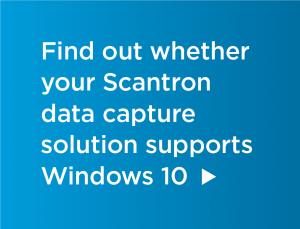Have you felt trapped by the sheer amount of paper you have to process and then left wondering how you will easily retrieve the data? Sure, you could go to a completely digital solution, but although the “paperless office” has been a staple of efficiency discussions for decades, there are still so many places where paper forms are simply more practical or economical:
- High-traffic situations, such as the DMV
- Places where on-the-spot electronic capture is not practical, such as voter registration drives or low-bandwidth areas
- Immediate customer feedback at restaurants or other in-person businesses
- Situations where your respondents do not have easy access to electronic devices or where having a paper record is crucial
Since paper forms are likely to be with us for a while, the following are some tips to more effectively capture data and images from paper forms electronically.
 1: For manual data entry, consider switching to an optical mark recognition (OMR) scanning solution
1: For manual data entry, consider switching to an optical mark recognition (OMR) scanning solution
Manual data entry is time-consuming, prone to error, and a drain on productivity. It’s also resource-intensive. To alleviate these issues, consider using modern OMR scanning.
- OMR is designed to capture data where you’ve asked respondents to check boxes on paper forms, and scanners can accurately process responses where individuals have changed their answers.
- Consider changing open, handwritten responses to a selection of options to reduce errors and add precision to your data analysis. You can always include an “other” area to capture non-standard responses.
OMR data capture has evolved and can easily capture more types of data more accurately than you might think.
2: Use a solution that combines OMR and image capture in one pass
An OMR + imaging scanning solution supports Intelligent Character Recognition (ICR) so that you can capture and transform printed or handwritten responses electronically while you collect more traditional “bubble” responses at the same time.
- You can use individual letter boxes to capture shorter data such as names or addresses, and process image snippets to capture longer, more open data such as comments or explanations. Instead of entering data, you can simply review the transformed handwriting to correct errors.
- You can capture and archive an image of the whole form. No more searching through boxes of paper if someone has a question, you get audited, or need to verify a complete response. You don’t have to scan forms twice to get both the data and an image any longer.
3: Avoid using standard office plain-paper scanners
Cost may make it tempting to simply use a standard, plain-paper scanner, but the little you save in upfront costs are lost in productivity, searchability, and accuracy.
Accurate data capture relies on reliable paper positioning, whether you’re using specially printed OMR forms or plain paper forms. This requires a tightly controlled paper feed that reduces skewing and multiple-sheet feed errors. Most plain-paper office scanners (desktop or otherwise) do not provide that level of paper feed control, leading to errors and inaccuracies in data capture.
Expand your options beyond the capabilities of a plain-paper scanner.
4: Consider a solution that is purpose-built and flexible, rather than a generic, off-the-shelf option
As with plain-paper scanners, it can be tempting to use cheap, generic scanning software to save costs. However, off-the-shelf solutions that aren’t designed for your organization’s needs may create more issues than they solve:
- Purpose-built, flexible solutions are designed with your exact needs in mind. They incorporate back-end processing into your existing databases and can include specific reports that present captures data so that it is easier to use for verification, accountability, and decision-making.
- Inexpensive, off-the-shelf or open-source solutions typically require a lot of configuration. Your team may not have the time or expertise to set up everything—so you only use a small percentage of the devices capabilities, and even that percent could be rife with errors. A purpose-built solution bakes configuration time into the development so that you are productive as soon as you install it.
While it may seem economical to choose a standard-office scanning solution, spending a little more up-front usually saves more time and money during the life of the device.
5: Choose a solution that can combine paper and online form capture and processing
Why limit yourself to one type of data capture? Your customers, employees, or constituents have varied needs and supporting those needs can increase the efficiency of mission-critical data capture faster that a single-focus strategy.
- Since databases don’t care where input comes from, consider using scanning options with embedded software that can easily link to database applications.
- Purpose-built software can include combinations of capture methods to extend flexibility without sacrificing efficiency. Your respondents can use the method they most prefer, and you get all your data in one place with a heavy data entry effort.
You don’t have to choose between capture methods—paper or digital—but if you still rely on paper, why not choose an option that increases efficiency, reliability, and accuracy.
How can Scantron help?
Scantron scanning solutions support efficient, cost-effective data capture, relieving your team of cumbersome manual data entry and ensuring more accurate data to drive your organization’s operations and decision-making. We provide:
- World-class from printing that ensure data capture accuracy.
- High-quality, long-lasting OMR and image scanners that provide a strong return on investment
- Purpose-built packaged and custom-tailored data capture software that is designed to meet your organization’s specific needs.




Social
View our latest posts or connect with us below on Social Media.